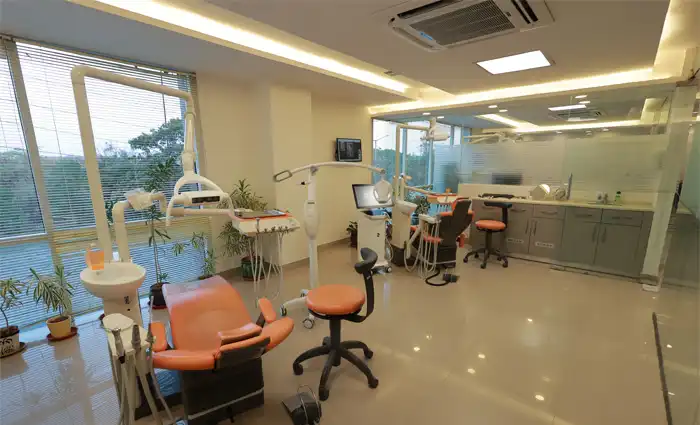Braces
Braces fix a number of different dental issues. This includes teeth that are spaced, twisted, misaligned, or overcrowded. The purpose of braces is to maximize the effectiveness of your teeth. This includes aligning them correctly so you can easily care for them and keep your gums healthy. Braces also fix your bite, so you can comfortably enjoy meals.
Types of Dental Braces
There are different types of braces available. The most suitable one for you will depend on a few factors, such as the specific issue you have, how serious your problem is, and your personal preferences. Below are some examples.
Traditional metal braces
Traditional metal braces have stainless steel bands, wires, and brackets. First, a bracket to each tooth is attached using a bonding material, then a thin flexible arch wire over the brackets is inserted, and small elastic bands known as ligatures are used to hold the wire securely. The wire in the bands and brackets is used to apply pressure to your teeth to slowly shift them into the correct position. These traditional metal braces are visible when you smile.
Ceramic braces
Ceramic or clear braces are similar to metal braces, but with the exception that both brackets, wires, and even ligatures are tooth-coloured, so they blend in with your teeth’s colour, making them less noticeable. One drawback of these braces is that they are more fragile compared to metal braces.
Lingual braces
Lingual braces work exactly like traditional braces, with the one difference being that lingual braces are placed on the back of your teeth instead of the front.
Clear aligners
Clear aligners, commonly referred to as invisible braces, are used most often as an alternative to traditional braces. Instead of using brackets and wires to move your teeth, these aligners are custom-made trays that gradually straighten your teeth.
Indications for Dental Braces
Dental braces can straighten your teeth and address a variety of orthodontic concerns, including:
Malocclusion (e.g., overbite, underbite)
Crowding or spacing of teeth
Crooked or misaligned teeth
The Dental Braces Process
Initial consultation and examination
Your first visit to the orthodontist will include a manual examination of your teeth along with taking x-ray images. You should also discuss your dental history with the healthcare provider to know the suitable treatment options.
Fitting of dental braces
A cheek retractor is used to keep the teeth dry and visible as they are fitted with dental braces. The teeth must first be polished, conditioned, air-dried, and primed for the brackets to be attached. Dental cement is applied to each bracket, and any excess cement is removed. A high-intensity light is used to make the bonding extra secure and durable. Once the braces are in place, arch wire is inserted over the length of the brackets and held with elastic ligatures. This entire process is usually completed in less than 20 minutes.
Adjustment of dental braces
The wires that are used to move the teeth need to be adjusted from time to time. Regular check-ups with the orthodontist will ensure that the wires are being adjusted so that your teeth continue moving as planned. The elastic ties that hold the wires in place can lose some of their strength over time, which is why regular adjustments become necessary.
Completion of Treatment and Removal of Braces
Once the dental braces have successfully aligned the teeth, the braces are removed at the end of the treatment. The ties and wires are taken off. The brackets are then carefully loosened, taking care not to damage your tooth enamel. To do this, pressure is applied to the base of each bracket, breaking the bond of the dental cement from which they were attached to your teeth. If any dental cement is left, it can be easily removed by using a dental handpiece.
Benefits of Dental Braces
Advantages of dental braces include:
- Correction of bite alignment and spacing issues
- Reduced risk of dental problems (e.g., cavities, gum disease)
- Straighter and more symmetrical smile
- Boost self-confidence and self-esteem
- Improved chewing and speech
- Prevention of jaw joint problems
Maintenance of Dental Braces
Make sure to follow the below tips if you have braces:
- Brush your teeth after eating to remove any trapped food particles.
- Use a special flosser to remove anything stuck in and around your braces.
- Avoid popcorn, hard and sticky candies, and gum. Reduce your intake of sugary sodas and juices to prevent sugar from sticking to your teeth and causing cavities.
At Dr. Motiwala’s, we provide customized braces treatment tailored to your specific dental needs. Our experienced team will carefully oversee each stage of the process, keeping you informed and recommending any necessary adjustments along the way. Our goal is to help you achieve a beautiful and confident smile.




